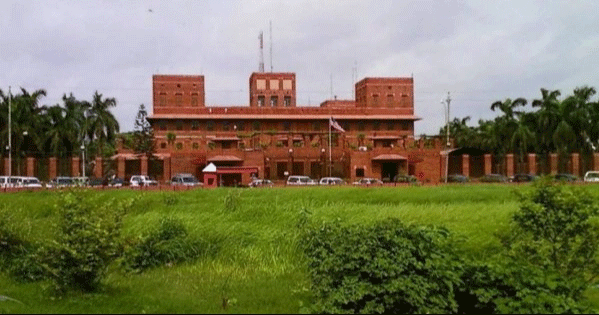Dollar price to be increased
New monetary policy
Cash flow to be decreased
Zarif Mahmud: Bangladesh Bank will announce the monetary policy for the second term of the current financial year tomorrow with strategies to deal with four major challenges in the global and domestic situation. Four main challenges have been identified in this monetary policy for the January-June period.
These are increasing the flow of foreign exchange to deal with the dollar crisis, reducing defaulted loans, increasing liquidity in banks and controlling the rate of inflation. Several new strategies are being adopted in monetary policy to meet these challenges. In this, the exchange rate of rupees against the dollar will be made more market oriented.
This will increase the price of the dollar in the market. At the same time, the flow of money will be reduced to reduce the rate of inflation.
The main features of the new monetary policy were presented at the central bank board meeting on Sunday. The board approved the policy. Central Bank Governor Abdur Rauf Talukder will announce this policy on Wednesday, January 17. The board directors of the bank were present in that meeting under the chairmanship of the central bank governor.
Sources of BB said that this year’s monetary policy will also curb the flow of money in the market to reduce the rate of inflation. This will reduce the demand. As a result, spending in the luxury sector will decrease. The flow of credit in this sector will also be reduced. At the same time, expenditure and credit flow will increase in the production sector. As a result, the inflation rate will decrease.
Meanwhile, the rate of inflation is now on the downward trend. In December, this rate decreased slightly to 9.41 percent. The central bank believes that this rate will come down further by next June.
Since the last financial year, the central bank has been following the monetary policy to reduce the flow of money in the market to reduce the inflation rate. This has increased the interest rate. As a result, the cost of loans and other expenses in the manufacturing sector increased. At the same time, the supply of credit in this sector has also decreased. The manufacturing sector is affected by this.
According to sources, the flow of foreign currency will be increased to overcome the dollar crisis in the market. For this purpose, strategy will be taken to increase export income and remittance. For this, the exchange rate of rupee against dollar will be more market based. As a result, the price of the dollar will increase in the market. Currently, Bangladesh Foreign Exchange Dealers Association (BAFEDA) and Association of Bankers, Bangladesh (ABB) set the dollar buying price at a maximum of Tk 109.75 and selling price at a maximum of Tk 110. But at this price, dollars are not available in the market. Dollar is being sold at an average of Tk 122 to Tk 126 in the market. In addition, the International Monetary Fund (IMF) is also under pressure to make the price of the dollar market-based. For these reasons, the central bank is going to relax the control on the dollar price.
The central bank believes that if the dollar appreciates a bit more, expatriates will be encouraged to send remittances and export earnings will also increase a bit. This will increase the flow of dollars in the market.
The liquidity crisis has increased due to the dollar crisis in the banking sector. As banks buy dollars from the central bank in cash, a large part of the liquidity goes to the central bank. This reduces liquidity in banks. In contrast, the central bank is providing Tk 12,000 to Tk 22 thousand crore almost every day under special liquidity support. To meet this crisis, the control over the banks’ interest rates will be further relaxed. At the same time, central bank policy will further increase interest rates. As a result, all types of interest rates will increase. It will also increase the interest rate on deposits and loans. This will encourage customers to deposit more in the bank. At the same time, increasing the loan interest rate will reduce the supply of credit to the unproductive sector. It will be possible to increase liquidity flow. At present, the rate of disbursement of loans is higher than that of deposits in banks. That is why more money is going out for loans than the rate at which money is coming in for deposits.
Currently, due to the global and domestic recession, many entrepreneurs are unable to repay their loans. Because of this, defaulted loans are increasing in banks. The percentage has slightly decreased but the quantity has increased. Pressure will be created on banks to increase loan collection to rein in defaulted loans. In this, steps have been taken to reprimand the banks if the default loans are high with severe punishment against the defaulters. This will create pressure on the banks to reduce defaulted loans. A policy has already been announced for this purpose.
Meanwhile, Central Bank Governor Abdur Rauf Talukder told reporters after a courtesy meeting with the finance minister that the price of the dollar will be based on the market. The central bank is working for this purpose. Steps have been taken to reduce the rate of inflation. This rate will gradually come down to 6 percent.
President Joe Biden tests positive for COVID-19 while campaigning in Las Vegas, has ‘mild symptoms’
International Desk: President Joe Biden tested positive for COVID-19 while traveling Wedne…







